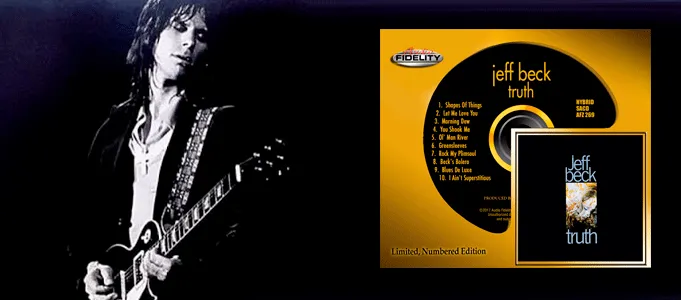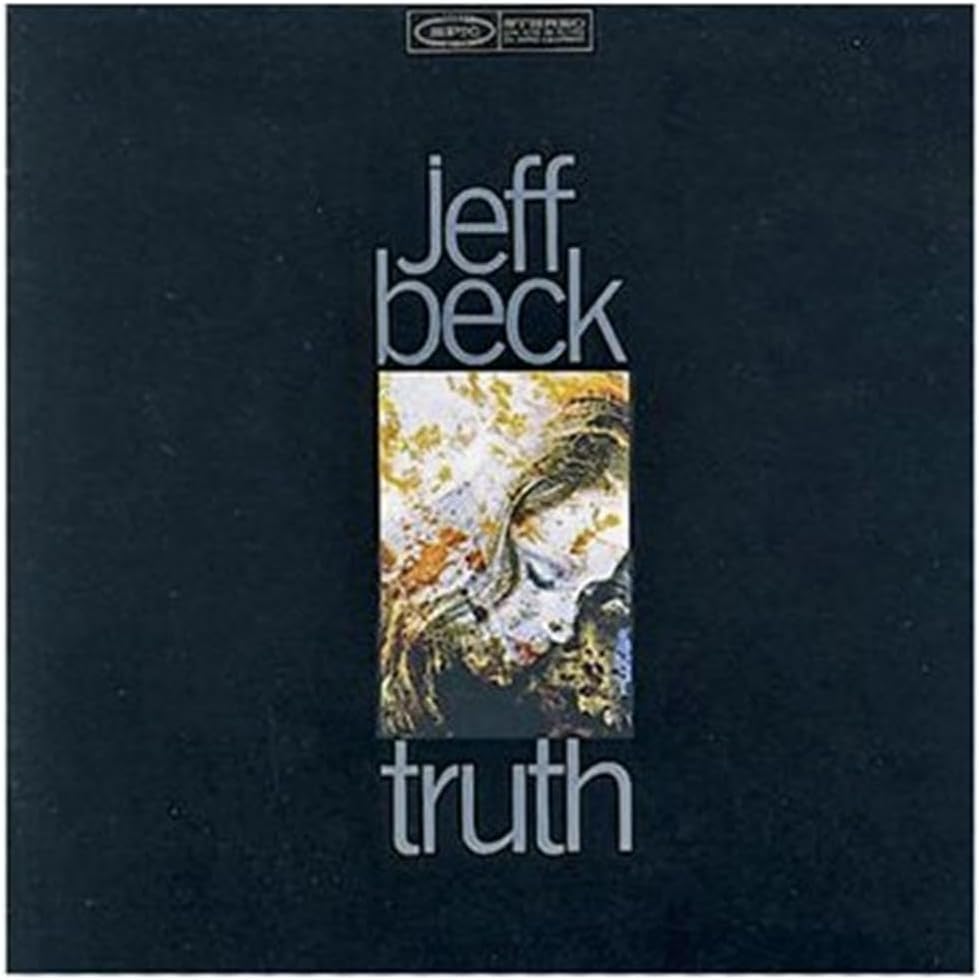
Jeff Beck’s Truth (1968): A Sonic Blueprint for Hard Rock and Heavy Metal
When Truth was released in 1968, it was both a culmination of Jeff Beck’s past work and a bold leap into a new sonic frontier. More than just a solo debut, Truth became one of the earliest blueprints for what would later be called hard rock and heavy metal. With its raw, explosive guitar tones, visceral energy, and groundbreaking arrangements, Truth stands as one of the most important rock albums of the 1960s — and its sound quality plays a pivotal role in its enduring impact.
A Rough Gem of Production
The first thing that strikes you about Truth is how unpolished it feels — and that’s a good thing. The production, handled by Mickey Most, is raw, loud, and unapologetically in-your-face. Unlike many polished albums of the time that leaned into the pristine pop aesthetics of the late '60s, Truth has the feel of a live performance. The instrumentation breathes, the mic placements pick up room tone, and there’s a dynamic range that gives the album a visceral punch.
The sound quality is imperfect, even by 1968 standards, but that’s part of the album’s appeal. The guitar amps hiss. Cymbals crash a bit too hard. The vocal reverb sometimes spills over. But none of that takes away from the listening experience — if anything, it enhances it. It’s not a hi-fi album; it’s a gutsy, honest record that puts emotion and immediacy above polish. That isn't to say it doesn't sound excellent on the right kit and for all the right reasons.
The Guitar Tone: A New Voice in Rock
Jeff Beck’s guitar work on Truth is the main event, and his tone is as iconic as it is revolutionary. Using a 1954 Fender Esquire, and occasionally a Les Paul, Beck carved out sounds that hadn’t really been heard before in a studio recording. The guitar is frequently drenched in natural amp overdrive, courtesy of cranked Marshall stacks and Vox amps. There’s a certain saturation to the tone that gives it warmth without sacrificing attack.
Unlike his contemporaries, Beck didn’t rely heavily on effects. Most of the sounds you hear on Truth are the result of fingers-on-strings mastery and the natural distortion of a hard-pushed tube amp. His use of feedback, sustain, and sliding harmonics was groundbreaking. The track “Beck’s Bolero” in particular showcases an orchestral layering of guitar tones that still holds up over half a century later.
From a production standpoint, the guitars are mixed forward, often occupying a dominant space in the left or center channel. This bold placement gives the guitar presence and power, making it the focal point of the record. The frequency range is rich in midrange but slightly scooped in the lows, giving it clarity without muddiness.
Vocals: Rod Stewart’s Gritty Brilliance
Rod Stewart’s performance on Truth is nothing short of phenomenal. His raspy, blues-soaked voice cuts through the mix with a blend of vulnerability and bravado. His takes were recorded with minimal processing, giving the vocals a natural, room-filling quality. The microphone bleed and subtle room reverb make it sound as if Stewart is performing in the same room as the listener.
The EQ on Stewart’s voice leans into the midrange and high-mids, which can sound slightly sibilant on some systems, but this rawness adds to the album’s live feel. There's little evidence of compression or vocal tuning, allowing the dynamics of his voice to shine through — you can hear the push of air on the microphone and the slight breaks in his register that make the performance human and relatable.
The Rhythm Section: Thunder and Swing
The bass work on Truth, provided by future Rolling Stone Ronnie Wood, is fat and melodic. The bass tone sits deep in the mix — not overly boomy, but definitely present. It provides a solid foundation for Beck’s flights of guitar fancy and gives the album its swinging groove.
Drummer Micky Waller’s contributions are crucial to the overall sound. His playing is loose, often lagging just behind the beat in true blues fashion, but it’s also powerful. The drum mics seem to have been set up with a fairly minimalistic approach — there’s a lot of room sound, and not a ton of close-miking. As a result, the kit breathes, but lacks the punch of more modern recordings. Still, the natural ambiance gives it an authenticity that’s hard to fake.
Track-by-Track Sonic Highlights
- "Shapes of Things" opens with a blistering riff that feels like a proto-metal statement. The mix is aggressive, with Stewart’s voice riding high and Beck’s guitar slicing through the left channel.
- "Morning Dew" features one of the best dynamic builds on the album. The quiet/loud structure shows off the full frequency range — from delicate cymbal work to roaring guitar overdrive.
- "You Shook Me" (yes, the same Willie Dixon song Zeppelin would record a year later) is a slow blues burner. The slide guitar tone is syrupy and rich, and the vocals are saturated with raw passion. The sonic tension between the instruments builds in a way that mimics a live jam session.
- "Beck’s Bolero" is perhaps the album’s sonic masterpiece. Produced earlier than the rest of the tracks, it features Jimmy Page, John Paul Jones, Keith Moon, and Beck — a supergroup lineup in disguise. The production is more layered and cinematic, giving a glimpse of what rock was about to become.
Limitations of the Era
It’s important to remember that Truth was recorded on four-track tape, and later bounced for overdubs. This limitation means there’s some tape hiss, minor phase issues, and slight distortion when the mix gets busy. But these limitations also force the arrangements to be lean — no overproduction, no unnecessary layers, just the essentials.
In modern remasters, some of these artifacts have been cleaned up, but many fans prefer the original vinyl or early CD pressings because they retain that analog grit and warmth. The original UK pressing in particular is praised for its dynamic range and natural EQ curve.
Legacy and Influence
The sonic character of Truth directly influenced a generation of guitarists and producers. From Jimmy Page (who essentially used Truth as a template for early Led Zeppelin) to Tony Iommi and even Steve Vai, the album’s raw production ethos and exploratory guitar tone helped expand the boundaries of rock sound design.Truth doesn’t sound like a studio record in the traditional sense — it sounds like a band captured in its primal, most expressive form. And that’s what makes its sound quality so enduring: it’s flawed, but in the way that great art often is. It’s human, it’s gritty, and it’s real.
